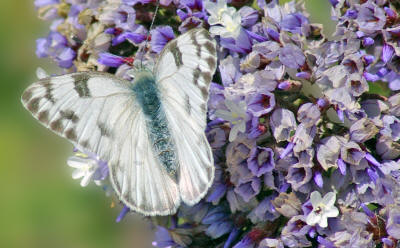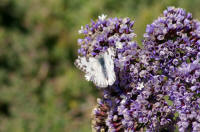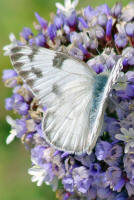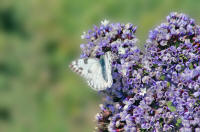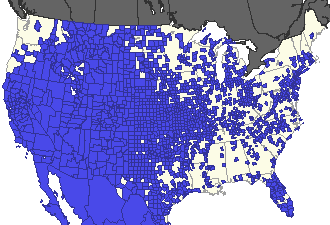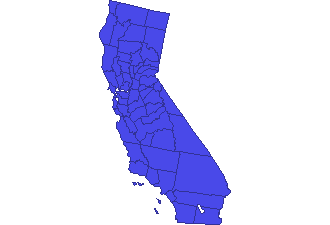|
United States Range Map |
|
California Range Map |
|
|
|
|
|
|
Identification: |
|
Life history:
|
|
Upperside of male
forewing has black checkered pattern on outer half.
Female is more heavily patterned, but markings are more
brown and diffuse.
Hindwing of both male and female white. Underside of
male hindwing with pale checkered pattern. Underside of
female with yellow-tan markings on hindwing and tip of
forewing. Short-day form has underside hindwing
veins with heavy gray-green outlines. |
|
Males patrol flats seeking receptive females, who lay eggs
singly on leaves and flowers of host plants. Buds, flowers,
and fruits are favorite foods of caterpillars, but they will
also eat leaves. A short-day form appears in spring and
fall. Chrysalids hibernate. |
|
Flight: |
|
Wing Span: |
|
Three flights, with a partial 4th in the South, from
March-November. |
|
1 1/2 - 2 1/2 inches (3.8 - 6.3 cm). |
|
Caterpillar Hosts: |
|
Adult Food: |
|
Plants in the mustard family (Brassicaceae) including
cabbage (Brassica oleraceae); and caper family (Capparidaceae)
including Rocky Mountain bee-plant (Cleome serrulata). |
|
Flower nectar including hedge mustards, composites, and
alfalfa. |
|
Habitat: |
|
Season: |
|
Wide variety of sites including dry weedy areas, vacant
lots, fields, pastures, sandy areas, railroad beds, and
roads. |
|
March-November (3 broods), in United States. |
|
Remarks: |
|
Conservation: |
|
Rather irregular in distribution in eastern North America,
not seen every year in many localities, such as Piedmont
region of North Carolina. |
|
Not required.
NatureServe Global Status:
G4 - Apparently secure globally, though it might be quite
rare in parts of its range, especially at the periphery.
Management needs: None noted.
|
|
Sources used to
Construct this Page: |
|
|
|
|
